We left the main strip and wandered north.
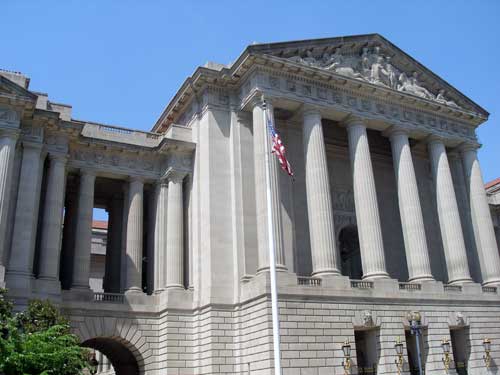
The Environmental Protection Agency's Federal Triangle Headquarters office building
Back when this building was constructed, the Federal Triangle was one of the city's most dangerous neighborhoods. Known as Murder Bay, it was a center of crime and prostitution. The plan for the area's redevelopment was the first federally funded urban redevelopment plan. The building, completed in 1934, was first called the New Post Office. In 1985, it was renamed the Ariel Rios Federal Building (in honor of an undercover special agent who was killed in the line of duty in 1982). It received its current name of the William Jefferson Clinton Federal Building in 2013 after the former president.
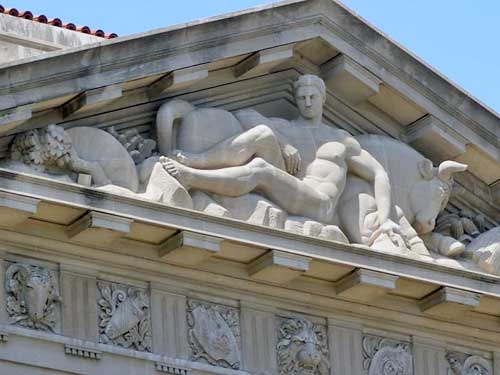
When completed in 1899, the Old Post Office Pavilion was the largest office building in the city. Used as the city's main post office until 1914, it was nearly torn down during the urban remodeling in the 1920's and then again in the 1970's, but fortunately it survived. It is now mostly filled with shops, entertainment and food.


Benjamin Franklin stands in front of the 315 foot tall tower.
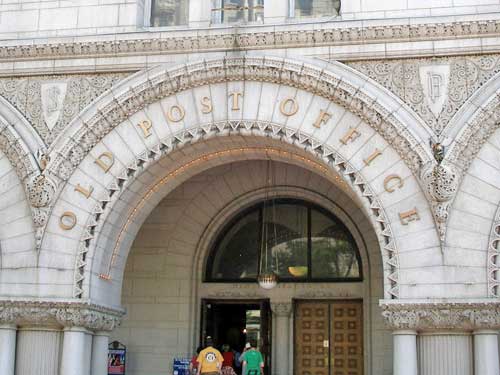
We took a ride to the top of the tower in a glass elevator. Joanne chose to skip this one!
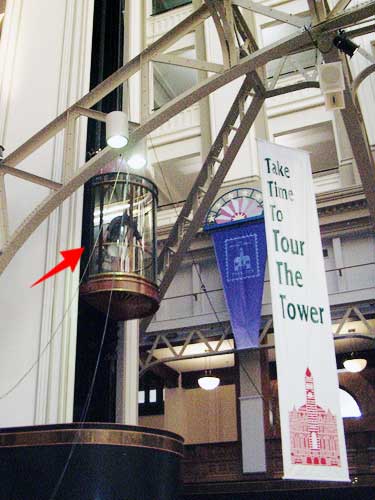
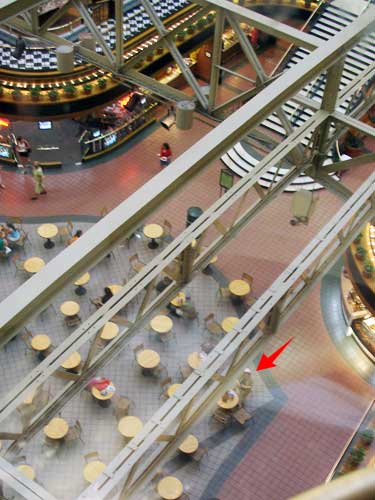
Up we go... while Joanne is happy to remain on solid ground! It was definitely not a ride for the faint of heart.
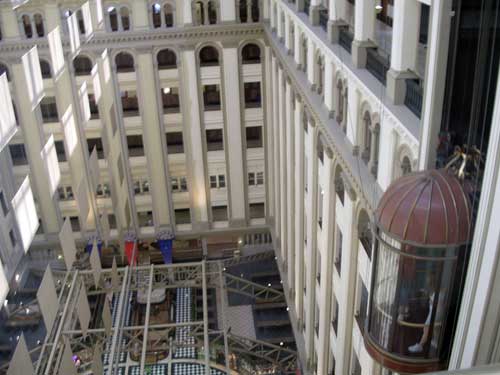

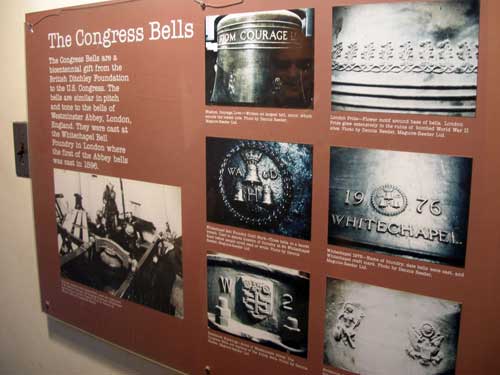
The ten Congress Bells (ranging from 300 to 3,000 pounds) were a gift to the US Congress from David Wills (founder of the British Ditchley Foundation) to honor the American bicentennial of 1976 in the spirit of good relations. They are similar in pitch and tone to the bells of Westminster Abbey in London and were cast at the same foundry (Whitechapel Bell Foundry) as the Abbey bells from 1596. This foundry also cast the Liberty Bell in 1752 and the bell in Big Ben in 1858 (their largest bell ever cast at 13 1/2 tons). The bells found a home in the tower in 1983, which had to be modified in order to accommodate their weight (a total of 13,000 pounds) as well as handle the stress of their swing.

The tower also offered wonderful views of the city!
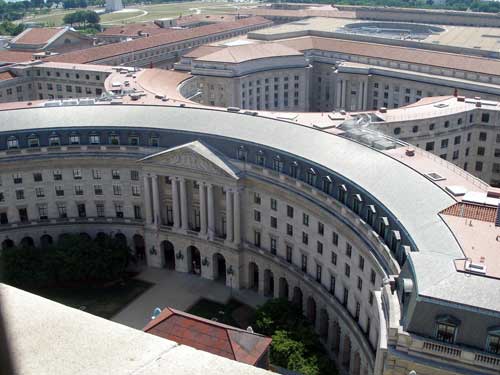
A top view of the William Jefferson Clinton Federal Building
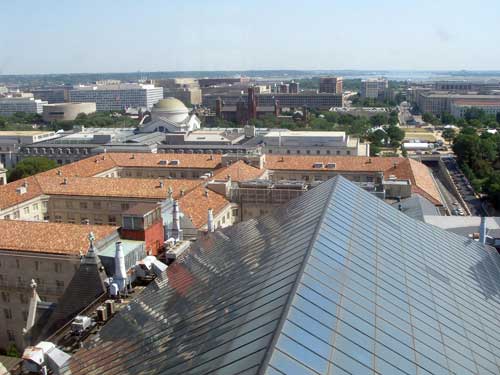
The red roofs of the Internal Revenue Service
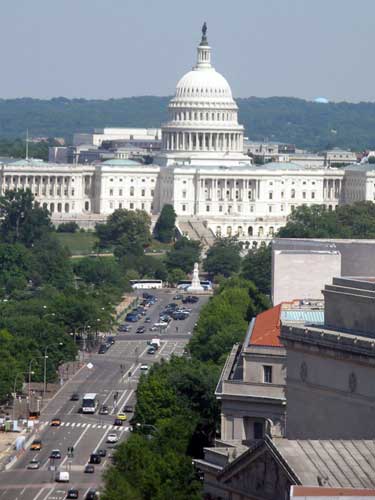
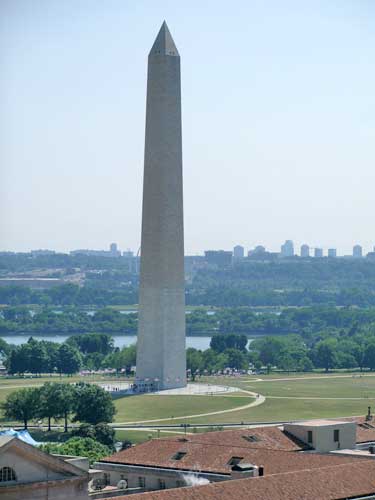
The capitol... and the Washington Monument
The then took a tour of Ford's Theater. This is where President Abraham Lincoln was fatally shot in 1865.
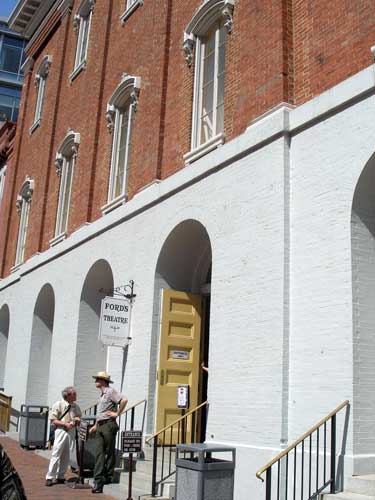
The building was constructed in 1833 as a Baptist church. In 1861, it was purchased by John T. Ford who turned it into a theater. Almost 30 years after the president's assassination, the front part of the building collapsed, killing 22 and injuring another 68. This led some to believe it was cursed. It was repaired and used as a government warehouse until 1911. It sat unused until the 1930's when it became part of the National Park Service.
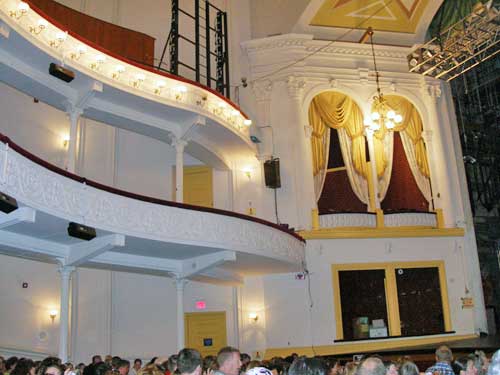
The American Civil War was drawing to a close and the Confederate Army of Northern Virginia had just surrendered. John Wilkes Booth was desperate to help the dying Confederacy and believed by targeting the president and his two immediate successors that he could throw the Union government into sufficient chaos so the Confederate government could reorganize and continue the war. At the very least, it would avenge the South's defeat.
He took advantage of his career as a well-known actor to slip into the presidential box while Lincoln was attending play at the theater. He shot Lincoln once in the back of the head (who died the following morning) but failed to fatally wound anyone else. He escaped by jumping down to the stage, injuring his leg. He fled on horseback and made his way to a farm in northern Virginia He was tracked down and shot by a Union soldier after refusing to surrender. Four other conspirators were tried and and hanged shortly thereafter.

The president's box where it happened
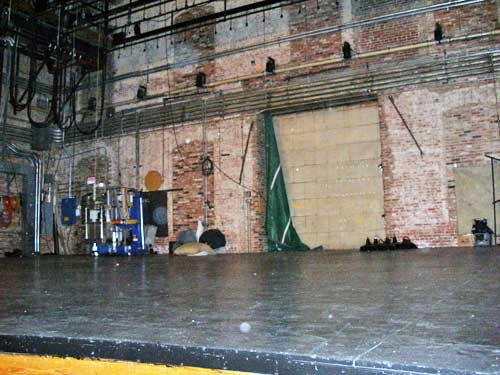
The stage
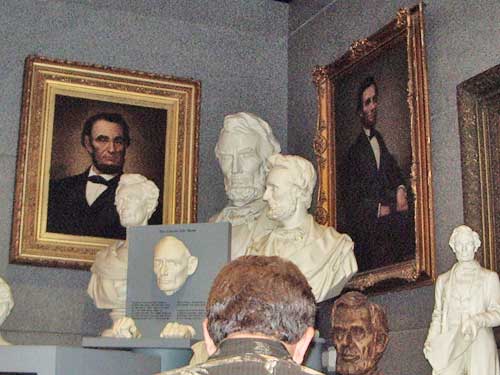
The museum...
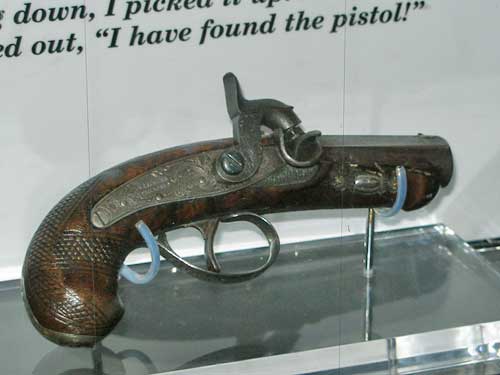
... with the infamous .41 caliber Deringer pistol that was used
We caught the trolley up toward the capitol building.
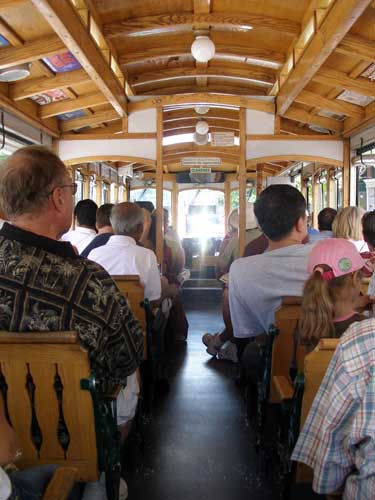
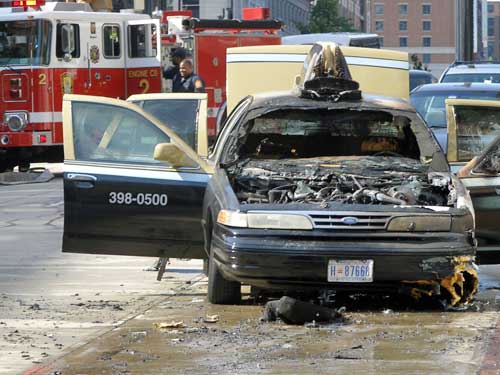
A burned out taxi
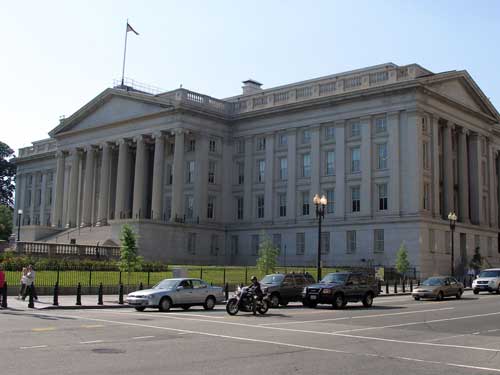
Rolling past the Treasury
The National Archives is responsible for preserving historical records, such as the Declaration of Independence and the Constitution.
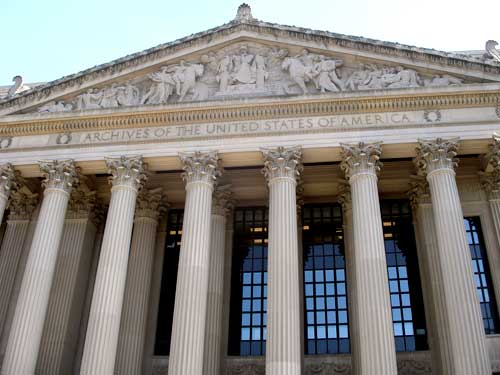
Construction began in 1931 with the demolition of a market building that had been standing there since 1871. Completed in 1937, the archives building required specialized air-handling systems and filters, reinforced flooring and thousands of feet of shelving. The exterior alone took over 4 years to finish.
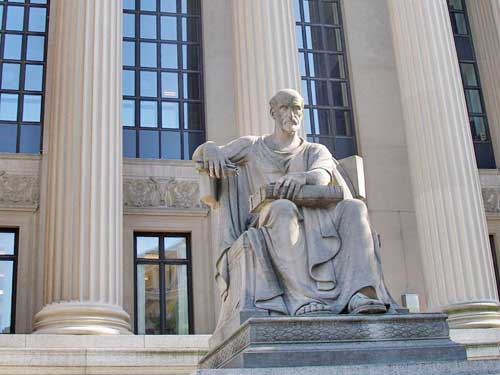
The building is surrounded by four statues. This one is called "Study the Past."
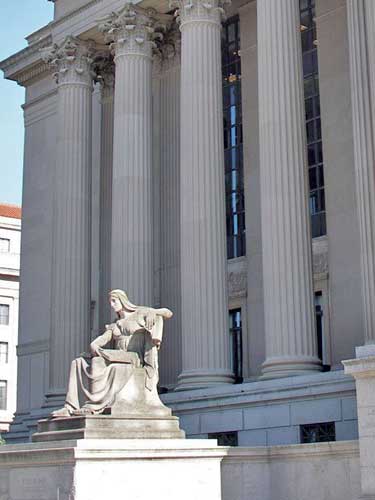
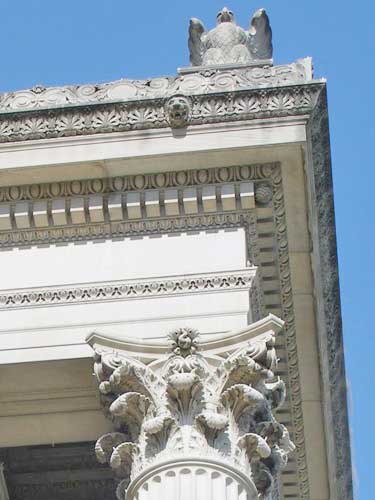
"The Future"... and detailed decorations
The capitol building is the location of the fedreal government's legislative branch, the Congress. It has housed the meeting chambers of the Senate and House of Representatives since it was completed in 1800.
Prior to establishing the nation's capital here, the new government met in a variety of locations such as Philadelphia, New York City, and other cities in Pennsylvania, Maryland and New Jersey. In 1790, it was decided to create a permanent capital along the Potomac River. The location was selected by President George Washington and formed from land donated by Maryland and Virginia. The federal district was named Columbia, the name that had been used for the original colonies since the 1730's. It originated from the name of Christopher Columbus (c. 1451 - 1506). The phrase "United States of America" was first used in 1776. Since 1507, cartographers had named the lands of the Western Hemisphere "America" after the Italian explorer Amerigo Vespucci (1454 - 1512).
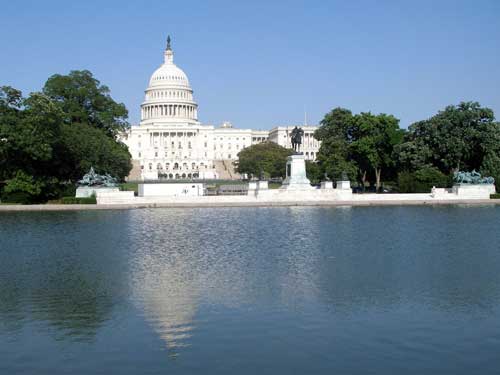
The capitol building sits behind the long marble and bronze Ulysses S. Grant Memorial.
When work began on the Ulysses S. Grant Memorial in 1902, it was the largest largest bronze sculpture ever commissioned by Congress at the time. It took almost 20 years to complete, is over 250 feet long and consists of three distinct sections: a statue of Grant on horseback in the center protected by four lions, and a scene of Civil War Union troops on either side (the Artillery Group on the right and the Cavalry Group on the left).
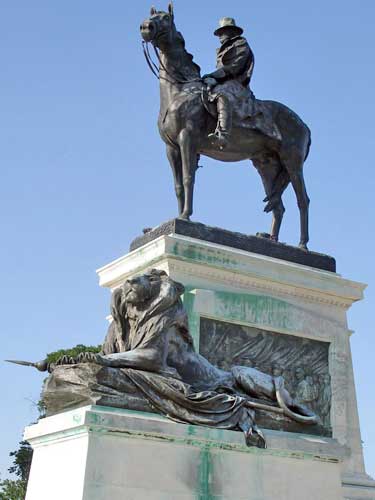
Ulysses S. Grant (1822 - 1885), shown here on his war horse Cincinnati, was the 18th US president (1869 - 77). As a Commanding General, he helped lead the Union Army to victory over the Confederacy.
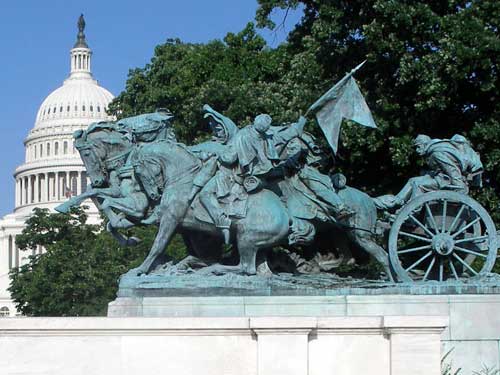
The Artillery Group
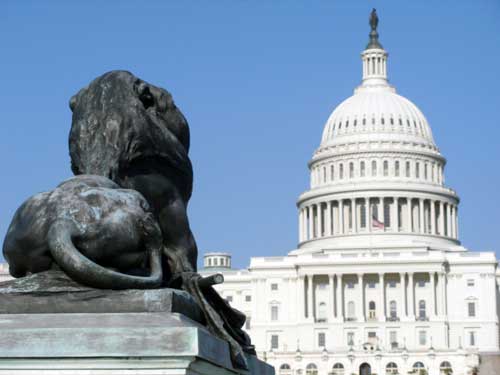
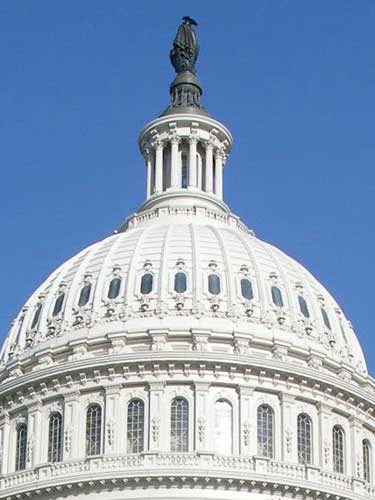
The current dome was part of an 1850's expansion that more than doubled the length of the building. It replaced the original copper-sheeted low dome of 1818.
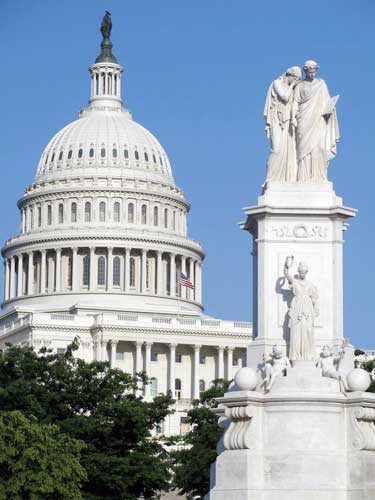
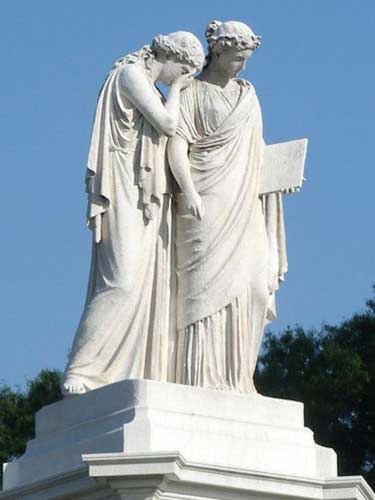
The Peace Monument (also known as the Naval Monument or Civil War Sailors Monument) is a 44-foot tall marble memorial erected in 1878 to commemorate the naval deaths during the American Civil War.
'Grief' weeps in mourning while 'History' holds a tablet inscribed with "They died that their country might live." Below them, 'Victory' holds a laurel wreath while at her feet are the infants Mars (god of war) and Neptune (god of the sea).
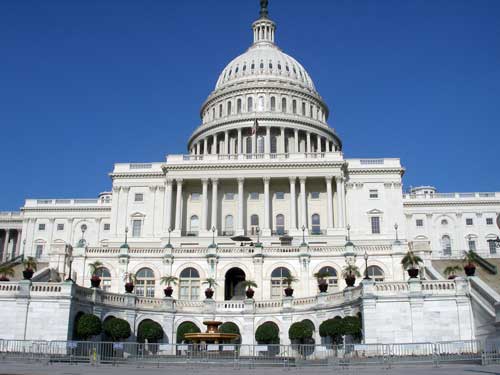
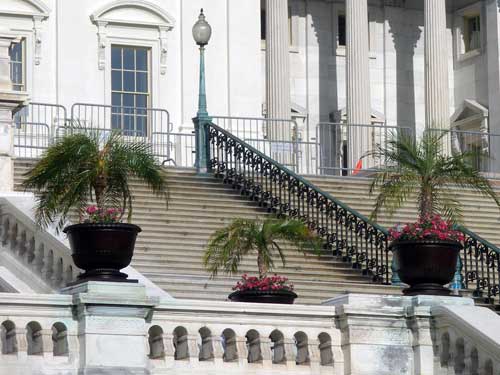
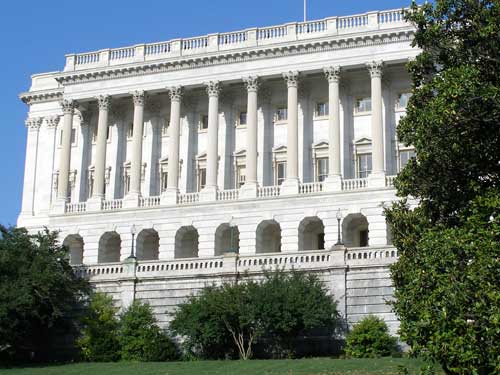
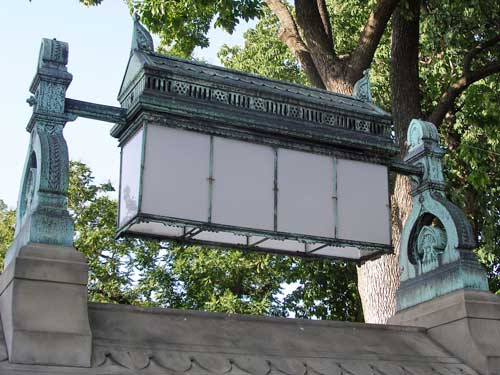
A lamp in the surrounding gardens
Dedicated in 1959, the Robert A. Taft Memorial was a 100-foot tall tower with a carillon on top.
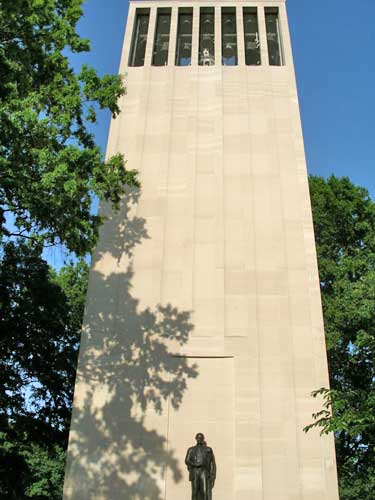
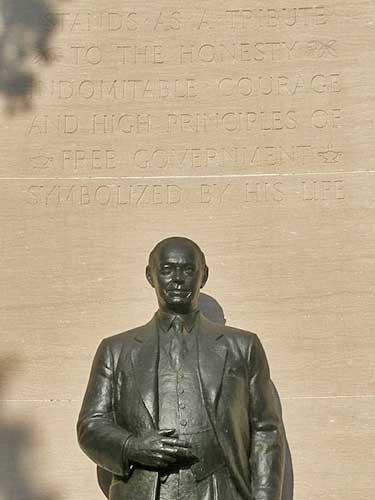
Robert Alphonso Taft (1889 - 1953) was a US senator and the son of President William Howard Taft. The memorial "stands as a tribute to the honesty, indomitable courage, and high principles of free government symbolized by his life."
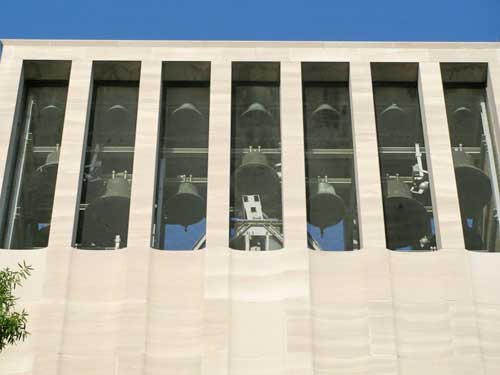
The 27 bells were cast in France, with the largest weighing 7 tons.
At the end of a very full day, we grabbed some beers at the Capitol City Brewery before returning to Union Station to catch the metro back to Maryland.
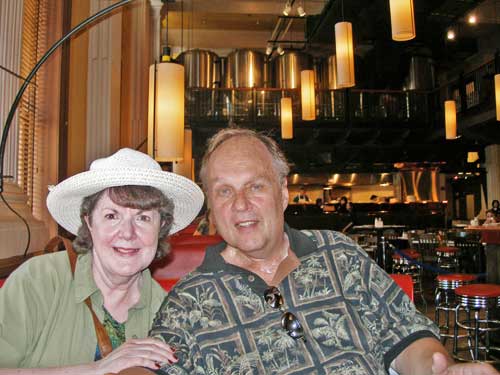
return

